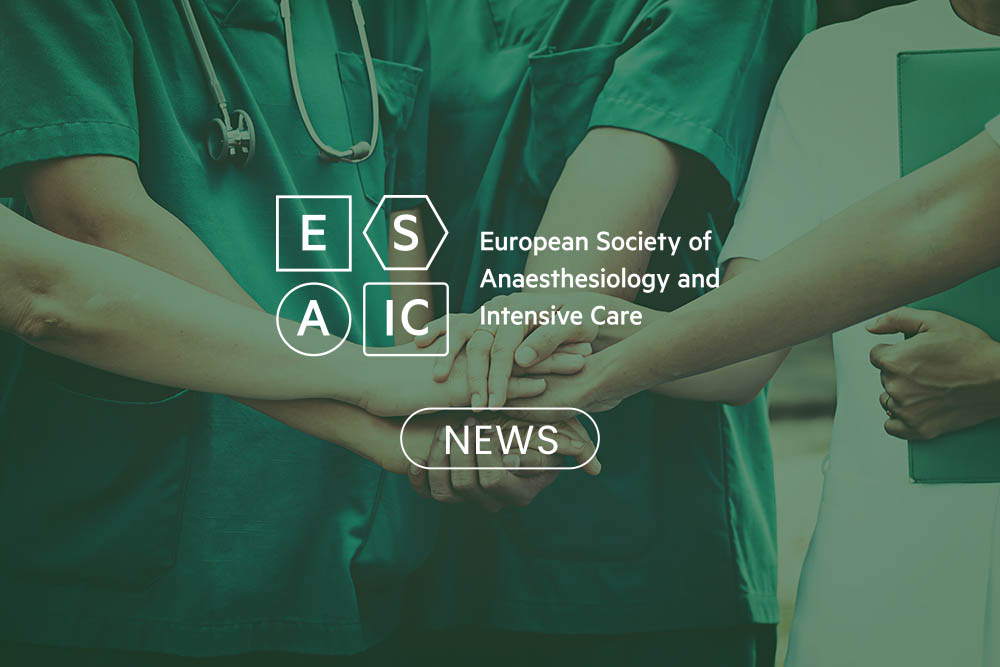Newsletter 2024
Airway management in anaesthesia and non-operating room anaesthesia
Join the ESAIC-endorsed STARGATE project!
The International obServational sTudy on AiRway manaGement in operAting room and non-operaTing room anaEsthesia – STARGATE study – is an ESAIC endorsed international observational study aiming at collecting information on advanced airway management during anaesthesia and non-operating room anaesthesia (NORA). It will collect prospective information on worldwide practice of supraglottic airway devices placement and tracheal intubation, and on adverse events associated with these procedures.
What is the rationale of the STARGATE Study?
According to WHO, more than 230 million major surgical procedures are carried out under general anaesthesia each year worldwide. Despite important technological advances, airway management remains a major challenge in anaesthesiology. Data from large international prospective studies on the current incidence of major peri-intubation adverse events are lacking in the anaesthesia setting, especially on outcomes such as peri-intubation cardiovascular collapse, severe hypoxemia, and cardiac arrest. These events are more common in case of difficulties with airway management, so first-pass intubation failure significantly increases these risks.
Airway management in the anaesthesia setting has traditionally been considered anatomically difficult, as opposed to physiologically difficult airway management in the critical care setting. During the last few years, a growing number of older patients with more severe comorbidities and frailty have been scheduled for surgery, and it will be interesting to observe how these conditions may be associated with a higher risk of adverse events.
What are the STARGATE main characteristics?
STARGATE study is an international prospective observational study aiming at collecting data from 10500 patients worldwide.
All consecutive patients undergoing anaesthesia for surgery or NORA will be screened for enrolment. An eligible patient is an adult (≥18 years old) undergoing advanced airway management consisting of either a supraglottic airway device or tracheal intubation. A patient undergoing advanced airway management as a consequence of undergoing critical illness is excluded from the study.
Each centre is asked to screen and enrol all consecutive patients up to the maximum number of 50 patient/centre.
What is the primary outcome of the STARGATE study?
The primary outcome of the study is the composite of post-induction cardiovascular collapse (systolic blood pressure < 65 mmHg, systolic blood pressure < 90 mmHg for > 15 minutes, unplanned need of vasopressors or fluid load > 15ml/kg to maintain the target blood pressure), severe hypoxemia (SpO2 < 80%) and cardiac arrest.
Which data do we need to collect?
Local investigators are asked to collect data on baseline patients’ characteristics (e.g. comorbidities, predictors of difficult airway management), type of surgery/procedure, elective strategies for airway management and its result (success or failure?), second and successful strategies, operators’ characteristics, adverse events, in-hospital mortality. An investigator, not directly involved in the patient’s care, will collect information on the procedure and adverse events in real-time. Since we consider NORA a setting with a potentially higher risk of adverse events (due to different availability of equipment, monitoring, expertise, and environment ergonomics), we will also collect information on airway management in patients undergoing a NORA procedure with advanced airway management.
What is the current status of the STARGATE project?
To date, 5000 patients have been enrolled from 155 active sites worldwide. Airway management practice may vary across different geographical areas, so having a picture encompassing a wide range of sites with different human and economic resources may represent an important value of this study.
How to join the STARGATE study?
For more information and if you are interested in joining the STARGATE team, please visit the study website: www.stargatestudy.com
The STARGATE team will then contact you to provide support for the next steps.
Each centre can select a suitable date to start data collection after approval from the local Ethics Committee.
With your support, we will collect relevant information to improve the safety and care of our patients during anaesthesia! Thank you!
Authors
- Vincenzo Russotto (study PI), Chiara Sansovini (investigator) and Massimo Muraccini (investigator) on behalf of the STARGATE Steering Committee.
References
- Weiser TG, Regenbogen SE, Thompson KD, Haynes AB, Lipsitz SR, Berry WR, et al. An estimation of the global volume of surgery: a modelling strategy based on available data. Lancet 2008;372:139.
- Cook TM, Woodall N, Frerk C. Major complications of airway management in the UK: Results of the Fourth National Audit Project of the Royal College of Anaesthetists and the Difficult Airway Society. Part 1: Anaesthesia. Br J Anaesth 2011;106(5):617–31.
- Cook TM. Strategies for the prevention of airway complications – _a narrative review. Vol. 73, Anaesthesia 2018. p. 93–111.
- Russotto V, Myatra SN, Laffey JG, Tassistro E, Antolini L, Bauer P, et al. Intubation Practices and Adverse Peri-intubation Events in Critically Ill Patients from 29 Countries. JAMA – J Am Med Assoc. 2021 Mar 23;325(12):1164–72.









